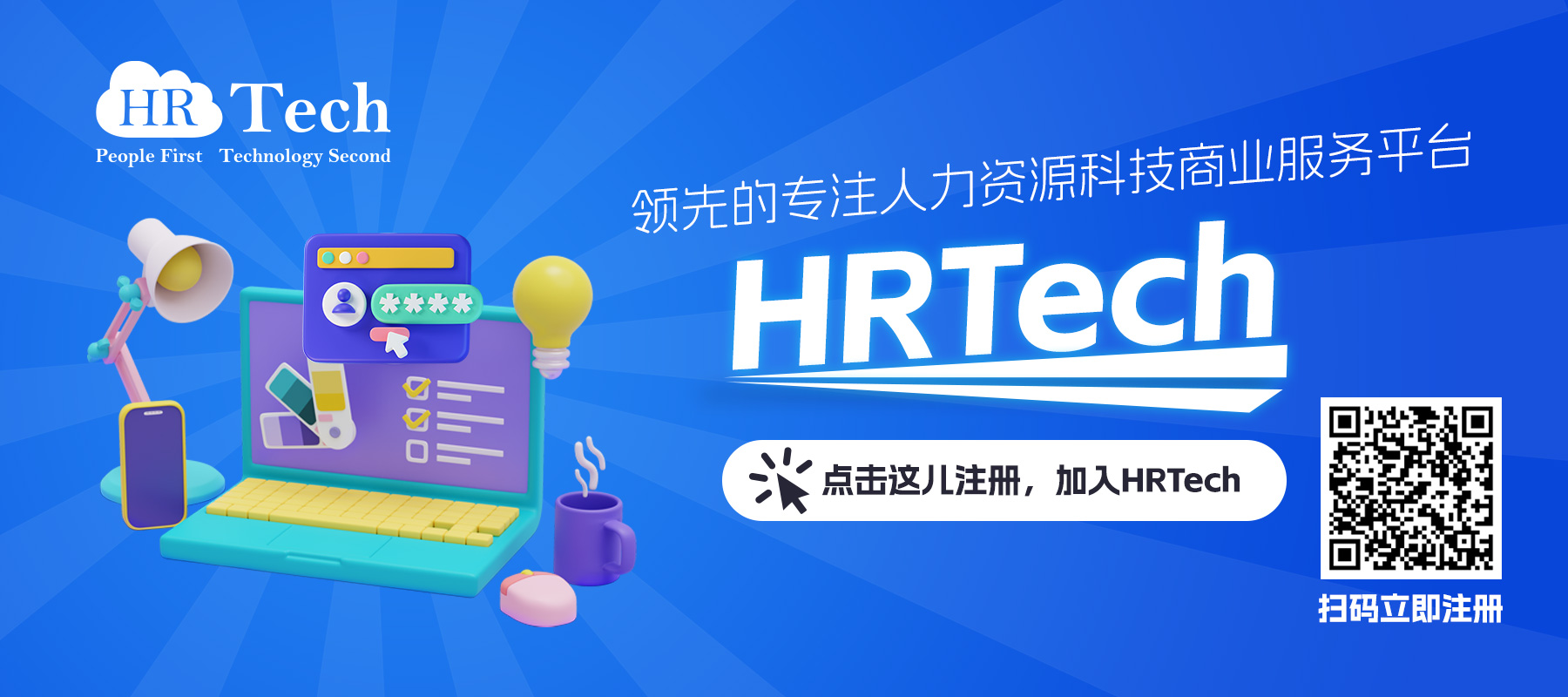Future of Work
HR的未来:为什么仍然是人?
随着我们在最新的工业革命中取得进展,这是每个行业的首要问题之一——技术是否会终结一些工作岗位?
创新无处不在,自动化,物联网,人工智能和机器人技术等方面的进步,旨在使手动和数字流程更快,更高效。
但是,对某些人来说,这种转变不一定是积极的。
普华永道估计,到2030年,30%的工作岗位可以实现自动化,而一些估计则将这一数字高达50%。在英国,搜索短语“机器人会占用我的工作吗?”从2016年的每月1600次点击增加到2017年的每月近198,000次点击。显然,对于整个行业的许多员工来说,这是一个令人担忧的问题。
但这是人力资源行业的一个问题吗?我们有多大可能看到这些技术进步实际取代人力资源角色?
评估威胁
在最近的一本电子书中,我们探讨了专家是否认为这些技术在工作场所的不断增长是对传统人力资源工作角色的威胁。
在我们的受访者中,28%的人认为这是一种威胁 - 但55%的人表示没有。
而且,总的来说,我们认为他们是对的。
我们需要停止将人工智能和物联网等技术视为对传统人力资源的威胁 - 而是考虑他们为我们提供的机会。这项技术有可能使员工关系变得更加容易。
从最基本的角度来看,这项技术可以帮助您的人力资源团队不再将大部分时间花在简单,重复,交易的人力资源流程上。安排面试,撰写案例说明,归档表格,对人力资源职能至关重要的所有类型的任务,但在工作日之外花费太多时间。
人力资源从业者的自由
让我们来探索一个例子:现在,普通的人力资源从业者花费大约40%的时间来回答劳动力的相同基本问题。那个时间肯定会更好地花在其他地方。
通过实施聊天机器人来回答这些重复的交易查询,您将释放大量的团队时间来处理更高价值的任务,并提供更多实际的ER支持。
根据聊天机器人的复杂程度——例如,如果您选择内置具有AI功能的会话功能的助手,您可以依靠它来处理更复杂的请求。它可以指导员工下载人力资源表格,帮助新员工加快速度,甚至可以制定和取消预约。
将这些技术视为推动因素:让您的员工有更多时间来完成AI永远无法接管的战略性人力资源和ER工作。面试,指导,亲自接触人才 - 真正需要人性化的事物。
在人力资源中保持“人”
人力资源的未来是,而且永远都是人。
您需要做的是关注他们的要求,使他们的工作生活更轻松,并依次改善员工的体验。
要记住的最重要的事情之一是,如果不适合您的团队或您的业务,您不必采用新技术。虽然硅谷创业公司独特文化的不断扩大的窗口正在改变许多人看待人力资源的方式,但没有人像你一样了解你的业务。这意味着选择能够使您的人力资源部门尽可能有效运作的技术至关重要。
以上为AI翻译,内容仅供参考
原文链接:The future of HR: why it'll always be people
Future of Work
Future of Work
JOSH BERSIN:人工智能招聘来临,面试会像恐龙一样消失吗?
文/JOSHBERSIN
公司做的最重要的事情之一就是雇人,这仍然是一门神秘的艺术。大多数公司会看求职者的工作经历,他们会打电话给推荐人,给他们做测试,然后带他们去面试。尽管如此,人力资源主管告诉我,他们仍然有25%的几率会犯错误。
为什么?如今,成功的标准是由认知能力、文化契合度以及求职者与公司抱负之间的契合度决定的。德勤(Deloitte)今年早些时候在Bersin完成的一项研究发现,业绩最好的公司在选择时使用这些“非简历”因素的可能性要高出90%,更能证明招聘变得多么复杂。
这种趋势越来越明显。大多数关于未来工作的研究显示,对个人沟通能力、创造性解决问题的能力以及通常被称为学习敏捷性(即求职者的学习能力和学习意愿)的需求在稳步增长。这些都是在你的大学背景,GPA,甚至工作经历中看不到的。
事实证明人工智能非常适合这个问题。供应商现在正成功地应用智能算法来创建测试、模拟,甚至分析视频求职面试,以提高招聘效率。而其中一些评估可能会扰乱市场中的一些重要力量。
这里有一些例子。
由哈佛大学(Harvard)和麻省理工学院(MIT)的神经科学家弗里达•波利(Frida Polli)创办的Pymetrics公司发展迅速。该公司开发了一系列认知和神经学测试,这些测试既有趣又容易进行,但在工程、销售和客户服务等方面具有直接的统计相关性。通过这些测试,该技术可以评估多达90种不同的性格特征,实际上消除了招聘中的偏见和歧视。联合利华(Unilever)、凯悦(Hyatt)、埃森哲(Accenture)和特斯拉(Tesla)等公司都对这一系统深信不疑,它们和其他公司几乎不需要看简历和教育背景就能招聘到这些职位的顶级候选人。
Pymetrics公司甚至通过共享算法审计工具,开放了他们的工具,以减少前瞻性偏差。他们理解在这些系统中减少偏见的巨大挑战,因为大多数培训数据是基于先前的雇佣成功。该公司最近获得了4000万美元的额外资金,其中包括Workday的投资者之一。
资金充裕的Imbellus公司刚刚宣布了一项1450万美元的融资计划,以帮助其继续开发基于模拟的评估系统,该系统目前被麦肯锡用来评估新员工的问题解决方案。我试过这些模拟测试,它们相当令人费解,也很有趣,它们显然测试了复杂的思维方式,远远超出了典型的SAT或其他测试。首席执行官丽贝卡•坎塔尔(Rebecca Kantar)专注于取代日益老化和过时的SAT考试(这是一个近10亿美元的市场),以改变公司招聘方式,从而改变大学评估优秀学生的方式。
HireVue是视频面试领域的先驱之一,现在每一分钟视频都能捕捉到100多万个关于求职者的有意义的数据元素,还能告诉经理求职者在回答问题时的诚实和自信。他们也有喜欢这项技术的客户,特别是在零售、客户服务和酒店领域的大量招聘。希尔顿的招聘多样性增加了16%,使用这项技术的效率大大提高。该公司目前拥有600多名客户,并提供了500多万次视频采访。
另一家由印度工程师创立、资金雄厚的公司PhenomPeople,已经彻底改造了招聘流程,将重点放在端到端营销上。招聘、招聘、内部职业流动和管理评估都是相互关联的,因此PhenomPeople决定建立一个看起来像职业门户的招聘系统。现在人工智能增强了这种能力,让招聘人员比以往更容易找到合适的人;候选人沟通是营销人员瞄准广告的方式;并跟踪候选人(内部和外部)的行为,以帮助个性化的求职体验。他们称之为人才关系管理(TRM),这是一种很好的描述方式。
当然,LinkedIn刚刚宣布了一系列新的基于人工智能的就业安置和搜索工具,以及它自己的求职者跟踪系统。LinkedIn的新工具可以让招聘人员更有效地找到合适的候选人,写出最有可能找到合适候选人的工作描述,现在提供了大量的数据,以帮助定位合适的人口、地点、经验和其他特征。所有这些都是为了消除这个错误的过程,让很多人来面试。
一个名为Orderboard的新公司。人工智能主要关注最抢手的工作(网络安全专家、人工智能工程师等),它不仅能评估能力和职位匹配度,还能将个人与被聘用团队的实际构成匹配起来。Orderboard公司的人工智能能够帮助招聘人员将他们所能找到的候选人的质量提高一倍以上,而且它的“吸引力算法”使公司几乎增加了50%的可能性,难以找到的候选人会接受电话或考虑一个职位。
此外,人工智能还有一个巨大的机会来改善筛选。像Mya(这一领域的先驱)、Olivia、Myra、IBM Watson招聘人员以及一个名为Yva的令人兴奋的聊天机器人正变得越来越聪明。我看过很多这样的工具,它们积累了越来越多关于候选人问的问题类型的情报,现在可以帮助招聘人员花更多的时间寻找和推销候选人,减少筛选的时间。
(聊天机器人市场非常庞大,供应商们应该开始关注应用领域。要确保你和供应商的谈话集中在招聘上,而不是一般的聊天。)
在人工智能和认知技术为人力资源增值的所有潜在领域中,这可能是最大的。虽然这项技术还很年轻,但成功的故事现在已经很普遍了,所以我认为每个公司都应该在他们要做的事情清单上确定基于人工智能的评估。
当然,所有这一切的风险在于人工智能以某种方式给系统引入了偏见,因此这些供应商正在努力确保他们的系统是公正、透明和安全的。在大多数情况下,公司会首先对这些系统进行测试,以确保这些算法不会无意中再现面试中的“人性化”偏见。
Facebook在这方面遇到了麻烦,因为其基于算法的招聘广告系统使得招聘人员可以根据年龄进行歧视。因此,您必须确保供应商精通这些问题。
对于求职者来说,我知道这有点残酷,但请记住,没有雇主愿意招错人。这些工具也会让你的生活变得更轻松,因为你不会觉得需要在面试中度过美好的一天来得到适合自己的工作。
我将继续观察这个空间的增长,但现在我非常乐观。(我追踪了1400多家人力资源科技公司,其中40多家专注于人工智能评估,这是最大的增长类别之一。)
作为一名分析师,我对评估领域进行了多年的研究,在这里我看到了价值的显著变化——由于招聘是我们作为领导者所做的最重要的事情,这是人力资源技术能够真正帮助一家公司超越的领域。
以上为AI翻译,内容仅供参考。
原文链接:AI Comes To Recruiting: Will Interviews Go The Way Of The Dinosaur?
Future of Work
Future of Work
评估技术开发商Imbellus宣布获得1450万美元 A轮融资,目前已筹集2300万美元
据美通社2018年10月31日报道,基于模拟的评估技术开发商Imbellus宣布结束由Owl Ventures领导的1450万美元 A轮融资。该公司目前的总资金达到2300万美元,包括Upfront Ventures和Thrive Capital在内的先前投资者与Rethink Education一起参与了此次投资。
“Imbellus团队的成就代表了改善教育与就业生态系统评估的独特机会,” Owl Ventures的Ashley Bittner说。“这项工作对K-12系统的未来产生了影响。它是关于实现一种专注于解决问题,系统思考和创造力等技能的教育范式。”
Imbellus不是将评估映射到大学的学术要求,而是与以创造力或解决问题等技能而闻名的组织合作,研究这些技能在现实世界中的应用。然后,Imbellus将观察到的技能和属性转化为学习科学和心理测量学的语言,以设计复杂的挑战,通过抽象的,基于模拟的评估将问题解决背景带入生活。
“我们正在努力将内容掌握与对潜在认知技能和能力的评估脱钩,以便不仅了解人们所知道的内容,还了解他们的思考方式,” Imbellus的创始人兼首席执行官Rebecca Kantar说。“我们的长期目标是重新定位教育系统,培养提出正确问题的思想,想象下一个要解决的问题,以及驾驭复杂系统。这是为了让所有学生都能做好公共教育的承诺,而不仅仅是对于最富有的10%。“
自2016年推出以来,Imbellus的学习科学家,游戏开发人员,AI / ML工程师和心理测量学家团队与评估和评估最前沿的研究人员合作,包括国家评估,标准和学生测试研究中心(CRESST) )在加州大学洛杉矶分校。
“在我们发现自己陷入前所未有的混乱中,理解并准确衡量个人解决问题的无数方式对于更好地将人们与工作相匹配将变得越来越重要。在麦肯锡,了解人们如何思考对我们来说一直很重要,而不仅仅是他们所知道的,“ Keith McNulty说麦肯锡公司数字与人力分析总监,自2017年起与Imbellus合作,将其数字化,基于情景的评估作为招聘和招聘流程的一部分进行试点。“Imbellus”技术正在帮助我们将案例研究访谈的原则扩展到更广泛的人才,提供引人入胜的体验,使他们能够解决我们所解决的问题,同时向我们提供有关他们如何思考的准确而详细的信息关于问题。“
Imbellus评估不是评估内容知识和有限的学习技能,而是利用自然世界模拟环境中的多步骤丰富场景。与专注于工作记忆,处理速度或思维流动性的智商测试或神经科学游戏不同,Imbellus评估旨在量化将人类智能与机器智能区分开来的技能,例如批判性思维,决策制定和元认知。 。
支持Imbellus评估的技术平台通过使用虚拟世界来防止作弊和黑客攻击,该虚拟世界利用AI为测试者生成不断变化的场景,以完成任务,具有可靠的可比性。
以上为AI翻译,内容仅供参考。
原文链接:Imbellus Raises $23 million to Take on the Testing Establishment
Future of Work
Future of Work
Pymetrics为人工智能招聘融资4000万美元
文/KHARI JOHNSON
9月27日,Pymetrics宣布筹集了4000万美元,通过结合神经科学和人工智能来扩大其工作,以帮助公司招聘合适的求职者。这笔资金将使Pymetrics继续用于产品的开发和扩张到美国以外的市场。这笔4000万美元的融资由General Atlantic牵头,Salesforce Ventures和Workday Ventures以及现有投资者Jazz Venture Partners和Khosla Ventures参与。
目前有超过60家公司在其招聘实践中使用Pymetrics,包括联合利华,凯悦和埃森哲。在某些情况下,使用Pymetrics的公司的雇佣多样性增加了20%,保留率增加了65%。全球有超过100万名求职者使用该公司的Android和iOS应用程序玩过Pymetrics游戏。
Pymetrics首先要求表现最好的公司正在招聘一系列游戏。这允许Pymetrics跟踪他们的表现和对不同场景的反应,并衡量与该工作相关的特定特征。然后将候选人与这些结果进行比较。
使用人工智能来匹配公司与候选人的情况一直在增加 - 来自诸如Indeed,ZipRecruiter,Vervoe和Plum等公司的解决方案 ,但对于该过程中出现偏见的担忧 也有所增加。
今年9月中旬,参议员Kamala Harris(D-CA),Patty Murray(D-WA)和Elizabeth Warren(D-MA)致函平等就业和机会委员会(EEOC)成员,询问有关EEOC如何评估基于算法偏差的歧视和在招聘过程中使用面部识别软件。
由于已经雇用公司职位的人员可能来自一个单一的,同质的团体,Pymetrics通过内部开发的偏见检测工具增强其服务,以防止仅仅强化现有偏见的结果。5月,Pymetrics 开源了一个名为Audit-AI的工具。
“我们看看这些特征使得那些人群[表现最佳者]的特征是独一无二的,有时这些特征可能不是工作绩效的预测因素,而是通过它的人的同质性,”Pymetrics领导数据科学家Lewis Baker在接受采访时告诉VentureBeat可以。“因此,我们使用审计AI来确保我们不会增加任何实际上更能预测特定人口群体的特征。”
除了帮助公司寻找新员工外,Pymetrics还用于帮助公司将现有员工作为新职位的目标,并确定潜在的改进领域。
自公司成立于2013年以来,它已筹集了总计5800万美元。
Pymetrics拥有87名员工,总部设在纽约市,在伦敦,新加坡和悉尼设有办事处。
以上为AI翻译,内容仅供参考。
原文链接:Pymetrics raises $40 million for AI-powered job recruitment
相关阅读:
2013年以游戏式测验来选出更适合公司职位的校招候选人,Pymetrics获得250万美元融资
2017年9月 利用AI和神经科学游戏匹配最合适工作,Pymetrics获800万美元融资
2017年用神经科学和AI帮你找工作,Pymetrics获得800万美元融资
Future of Work
Future of Work
Eightfold使用AI为求职者匹配空缺职位
文/KYLE WIGGERS
招聘人员很难; 找一个合格的求职者并不容易。根据美国劳工统计局的数据,在医疗保健和金融服务等行业,平均招聘时间超过49天。招聘费用很高 - 单个职位的费用高达4,129美元。
这就是Eightfold的用武之地。今天的初创公司在其职业发现平台 - 个性化职业网站 - 中添加了一个新产品,该平台利用人工智能(AI)来解决所谓的人才缺口。
首席执行官兼联合创始人Ashutosh Garg在接受VentureBeat采访时解释说,大多数工作地点的问题是他们没有考虑到候选人的相关工作经验,技能,角色和教育背景。同时,在这个等式的雇佣方面,他们经常会阻碍那些分享,推广和候选人分类工具不足的公司。
“糟糕的职业网站和职位描述阻碍了申请过程,因为他们没有吸引合格的人才,更糟糕的是 - 劝阻不同的候选人,”加格说。“由于任何特定组织内的机会过剩,大多数候选人表示,求职中最艰难的一步就是找到合适的角色。”
Eightfold带来了由领先的AI研究人员设计的高度个性化,机器学习驱动的工作匹配引擎(Eightfold的数据科学家在他们的名字上有6,000多项研究引用和80多项搜索和个性化专利。)职业网站有候选人创建个人资料并上传(或链接到)简历,Eightfold的专有匹配算法解析上下文信息。求职者可获得公司最适合的职位列表,以及对其技能的相关性评估。
实际上,个性化职业网站可以判断一个人在提交申请之前是否可能被考虑担任该职位。
Eightfold的AI应用并不止于此。它的聊天机器人可以使候选人有资格,收集简历,并回答有关技能,工作适应性,福利和文化的问题。除了使用人工智能之外,这家创业公司还从拥挤的工作现场竞争对手中脱颖而出,拥有SEO优化的工作页面,一键式申请流程,并支持公司简介上的自定义内容 - 包括视频。
Garg声称,它减少了80%的采访时间,同时降低了雇用成本。
“在Eightfold中,我们将焦点从模糊的要求列表转移到候选人最关心的内容 - 他们将要做的工作,他们将与之合作的人以及他们获得工作的可能性,”他补充说。 。“无论候选人是否最终被聘用,具有申请公司工作积极经验的候选人更有可能购买其产品,并建议其他人申请在那里工作。”
以上为AI翻译,内容仅供参考。
原文链接:Eightfold uses AI to match job seekers with open positions
Future of Work
Future of Work
人工智能:如何使人力资源团队自动化
文/ Laura Butler
在我们日常生活中的自动化和我们学会在办公室里一起工作的方式之间,可以说世界已经为人工智能做好了准备。为了保持竞争力,人力资源专业人员也需要找到接受它的方法。
在我们的一生中,人类的人工智能(AI)已经从虚构的科幻人物变为现实。也许你没有像R2-D2这样的机器人跟随你,但你可能使用智能手机助手,智能家居设备或智能手表 - 所有这些都使用AI。
AI还用于流量预测应用,金融欺诈保护服务,基于用户兴趣的社交媒体馈送,垃圾邮件过滤器和在线购物推荐。
根据Workfront的工作状态报告,美国工人表示,他们37%的工作已经自动化,其中40%的工作应该是自动化的。无论我们是否意识到,我们已经达到了自动化的时代。
在我们日常生活中的自动化与我们在办公室学习与其一起工作的方式之间,公平地说世界已经为人工智能做好准备并保持竞争力,人力资源专业人员也需要找到接受它的方法。
人工智能可以影响人力资源
“工作状况”报告还发现,只有三分之一的工人认为人们将在不久的将来与人工智能竞争工作,而83%的人认为人工智能会让工人以新的和创新的方式思考。
大多数(69%)工人表示,自动化将为他们提供更多时间来完成他们的主要工作职责,几乎一半(44%)的人表示他们的工作的某些部分已经被人工智能接管,从而将他们从更多的战略工作中解放出来。
我们已经开始采用人工智能,我们不会感到受到它的威胁。事实上,我们认为AI有可能帮助我们在工作中更有效。
有些东西机器更快更有效率,作为人力资源专业人员,你可以让人工智能承担这些任务,这样工人就可以将时间和技能用在需要人工接触的任务上。
您可以通过以下三种方式自动化人力资源团队,以提高工作效率并实现员工之间的更多协作。
如何自动化您的人力资源团队
这些领域特别有利于自动化,当您在这里实施AI时,您会发现您的团队可以自由地做更有意义的工作。
1.自动化重复性任务
“工作状态”报告发现,工作人员每周只有40%的工作时间用于主要任务。这意味着他们的大部分时间花在了不那么有意义的工作上,而且他们没有多少时间使用他们所雇用的技能。
自动执行重复性任务是在团队中实施AI的最简单方法之一。您每天或每周以相同方式执行的流程和任务占用宝贵的时间,这些时间可以更好地用于高价值的工作,例如制定战略和创造性解决问题。
诸如入职新员工,提出常见问题,完成常见请求以及批准文档等任务是自动化的理想选择。
报告是另一项重复性任务,可以自动化以提高生产力。当使用自动化仪表板和报告时,管理人员可以查看实时进度更新并提供更准确且更频繁的报告,同时减少编译它们所需的时间。
在这里使用AI有可能提高效率,因为人为错误的空间会减少。自动化常规工作流程还意味着团队可以自由地建设性地工作,从而提高生产力。
2.自动化通信和审批流程
当被问及是什么妨碍了他们的工作时,“工作状态”报告的受访者列出了以下最常见的响应:
●浪费的会议(62%)
●电子邮件过多(55%)
●意外的电话(41%)
请注意这三者的共同点:它们都是通信问题。
事实是,沟通和审批流程可能占用我们很多时间。在电子邮件,即时消息,不必要的会议和追逐经理批准之间,我们有时间在今天完成任何其他工作,这是一个奇迹。
自动化通信将使他们更有效率并为您的员工腾出大量时间,以便他们能够花时间协作完成重要任务。
自动化通信和审批流程不仅可以提高团队的工作效率,还可以腾出时间进行更多协作。
3.自动化合规性工作流程治理
合规性流程通常很麻烦且非常耗时,但使用正确的AI解决方案,可以更有效地完成这些流程,而不会占用宝贵的时间。
一家科技公司发现自己增长如此之快,以至于其团队花费了大量时间来生成和发送大量的录取通知书。手动编写后,这些信件需要经过多次审核,以确保符合合规要求。但是,通过人工智能解决方案起草了这些信件并包含了内置的合规性和准确性审核,新流程要求员工花费更少的时间。该公司的处理时间缩短了66%,其四名全职员工可以自由地将时间花在更高价值的工作上。
自动化合规性工作流程将提高准确性,同时减少工作人员在这些任务上花费的时间。这引领了提高生产力和协作的方式,因此员工可以在真正需要的地方使用他们独特的人力技能。
“工作状况”报告显示,随着劳动力向更自动化迈进,82%的工人对学习新事物感到兴奋。人工智能的时代就在这里,通过将其纳入我们的团队,我们可以使工人更高效和协作。
然而,93%的工人也认为总是需要人性化,他们是对的。虽然人工智能有能力使我们更有效率并打开新的可能性,因为工人将行政任务放在一边支持更高价值的任务,但人们将永远是推动人工智能与人类工作融合的动力。
当您在人力资源团队中实施人工智能时,您可以自由地花时间制定愿景,最终使人们和人工智能共同合作,实现令人兴奋的新生产力和协作水平。
以上为AI翻译,内容仅供参考。
原文链接:The Age of AI is Here: How to Automate Your HR Team
Future of Work
Future of Work
将虚拟现实融入工作场所:最佳用例和挑战
世界各地的组织发现,越来越倾向于采用开放式办公室文化,并利用可以重新发明协作并简化分散业务运营的新时代消息传递工具。虚拟现实等智能技术正在从个人生活转向工作场所。这些技术不仅改变了我们的会面和协作方式,而且还改变了我们工作的物理环境。
戴尔的一项名为“未来劳动力全球研究”的劳动力研究显示,员工,特别是千禧一代,希望在不久的将来能够在智能办公室工作,因为许多员工都认为他们当前的办公室不够智能。Universum是一家位于新加坡的雇主品牌研究公司,另外一项研究表明,新加坡有49%的Z代人认为VR将彻底改变工作。虚拟现实就是这样一种技术,通过帮助吸引最优秀的人才并提高工作效率,可以帮助提高工作场所的智能性。
能够将员工传送到千里之外办公室外部世界的纯粹想法可能有助于提高员工的工作效率,同时降低他们的压力水平。这是在世界正在谈论SpaceVR的时候 - 一个创建虚拟太空旅游的平台,它将成为世界上第一个进入太空的虚拟现实相机卫星。感谢在虚拟,增强和现在混合现实空间中取得的技术进步。来自微软,三星和Oculus等公司的耳机让世界变得更加有趣。
虚拟现实在游戏和娱乐行业引发了风暴,它具有改变通信和协作的能力,使坐在不同位置的员工能够在一个虚拟会议室中聚集在一起。
虽然该技术在游戏和娱乐行业引发了风暴,但虚拟现实的真正力量在于它们如何改变通信和协作,从而使位于不连续位置的员工能够在一个虚拟会议室中聚集在一起。总部设在新加坡的全球专业招聘团队Hays董事总经理林恩·罗德说:“虚拟现实创造的可能性数量令人震惊。一旦我们开始探索它可以实施的多种方式,它就可以对工作世界产生重大影响“。一种技术是增强现实,它带来了许多应用领域,如培训。所以是微软正在支持的混合现实。
让工作场所真正聪明
今天的劳动力将未来的工作场所定义为不再是“遏制”的场所,而是他们可以见面,学习和分享经验以及合作创意的地方。工作场所基础设施已经成为留住聪明员工的关键原因之一,领导者绝对不应忽视这一点。在工作空间的VR方面,远程办公和远程呈现对专业人士非常有用,因为它可以灵活地在任何地方工作,无需从A点到B点进行虚拟会议,节省了时间和金钱。VR的使用扩展到公司的所有部门 - 从人力资源到进行培训,到可以使用VR模拟器进行设计和测试的工程师和设计师。
Gartner表示,虽然VR需要时间才能在企业中充分实现,但越来越多的解决方案提供商专注于虚拟工作场所,并且这一领域的创新正在快速增长。像微软和思科这样的公司已经推出了产品,现在Oculus通过他们的Oculus for Business,Oculus Desktop和Facebook Spaces计划与他们的母公司Facebook一起投入了大量资金。
“为了让虚拟工作场所真正实现,需要发生许多技术,流程和文化变革,但具有前瞻性的组织应该追踪这一领域正在取得的进展,”Gartner说。
“当涉及到企业或工作场所时,我们仍然处于使用旧的传统产品的阶段,这些产品具有非常糟糕的体验和用户界面。但是我可以看到企业在员工经验,福利,学习和培训方面花费大量资金的变化,人力资源技术创业公司Leena AI首席产品官Sarthak Saini说。
虚拟现实的使用案例
根据最近与戴尔合作的TEDx班加罗尔沙龙解释,VR初创公司Merxius表示,目前VR有无数的应用。它被广泛用于工程,制造和医疗保健领域的培训。因此,在实际执行VR之前,医生正在VR中测试复杂的外科手术。对于设计人员而言,首先在VR上完成的设计可以让客户在实施之前了解设置。在教育方面,太阳能系统只是作为教科书中的图片存在,但是使用VR可以获得触觉和感觉,体验它的大小,就像你实际上在那里一样。
“最新的VR技术可以帮助员工更加切合实际地预期工作和责任。这减少了调整和转换到角色的时间,使它们更有效率,并为日常工作增添了乐趣,“戴尔印度客户解决方案集团总经理Indrajit Belgundi说。如今,企业已采用这些技术帮助员工在工作中获得更多投入和积极性。品牌已经发现了游戏化移动应用或产品的好处,提高了用户参与度和品牌忠诚度。
例如,客户服务培训要求教师员工如何影响,保留和理解客户要求,以及使用问候语,肢体语言,适当的语调和处理客户投诉的最佳方式。如果学习是假设的话,这些技能组合很难磨练。然而,借助虚拟现实,雇主能够模拟现实生活中的情况,Indrajit补充道。
“在学习和培训方面,我看到了虚拟现实的巨大空间。在制造业,制药公司或消费品公司,员工需要信息触手可及,虚拟现实可能具有很大的用途,“赛尼说。让我们举一个例子,假设销售员工去客户展示产品。现在,他们可以借助虚拟现实展示实时产品,而不是展示长PPT或演示视频。Saini认为,在某种程度上,它减少了销售周期。虚拟现实在培训新加入者时非常有用,而不是讲座,他们可以使用VR查看产品的详细信息。此外,通过在培训新员工期间使用VR,您还可以帮助他们对他们将要执行的工作有更加现实的期望。这减少了调整和转换到角色的时间,从长远来看,它们的工作效率更高。此外,它很有趣。
已经有很多工具可以帮助企业与自由职业者甚至远距离的员工合作。管理人员倾向于满足于Skype或Slack的对话,并认为他们使实时协作尽可能真实。但是,当VR也进入这个等式时,以前不可避免的时间浪费会大幅减少,Saini总结道。
为工作场所提供VR
尽管围绕这些技术进行了大量炒作和投资,但VR市场仍然处于起步阶段,即便在那些推动创新的市场中也不稳定。为了采用VR,企业需要创造一种工作场所文化,将新技术的使用视为达到目的的最终目的 - 最终改善公司并促进员工个人成功。
正如戴尔技术公司的REALIZE 2030:人机合作伙伴关系的下一个时代所概述的那样,据估计,2030年将存在的85%的工作尚未发明,他们所需要的技能尚未确定。 。Indrajit认为,“为了取得成功,人们将需要使用VR等新技术进行学习,这使得获取新知识的能力比知识本身更有价值。”
价格和内容将定义VR在工作场所的成熟度。从工作场所培训的角度来看,创建VR内容的成本和难度是关键参数。组织需要对VR进行大量投资才能使其在办公室成为现实。与任何其他连接技术一样,VR也带来了网络安全挑战,感受专家。
挑战将是有趣的 - 看看未来工作文化和奖励与奖励模式将如何变化。Indrajit总结道:“当我们创新并采用新技术时,我们应该问问自己为什么要这样做,以及它对我们的员工,客户和更大的社会会产生什么影响。”
以上为AI翻译,内容仅供参考。
原文链接:Plugging Virtual Reality into workplace: Top use cases and challenges
Future of Work
Future of Work
2019年三大员工敬业度趋势
文/ Sushman Biswas
员工敬业度已成为各地雇主关注的首要领域。随着技术的采用和创新的劳动力管理战略的日益普及,领导者现在可以更专注于让他们的人才快乐和参与。以下是我们2019年的三大员工敬业度趋势。
员工敬业度已成为各地雇主关注的首要领域。随着技术和创新的劳动力管理策略的不断采用,领导者现在可以更多地关注于让他们的人才开心和投入。以下是我们2019年的三大员工敬业度趋势。
随着企业顺应数字化浪潮,员工敬业度仍是全球商界领袖们最关心的问题。据估计,每一位离职的员工每年会给公司带来2246美元的巨额费用。盖洛普(Gallup)的数据显示,全球只有15%的员工在工作场所工作。
然而,希望总是存在的。组织和人力资源主管已经将员工的经验和敬业度作为商业议程。借助人工智能、对话界面和强大的分析套件等技术,企业正在采取明确措施,提高员工参与度,提高员工产出。
2019年前三大员工敬业度趋势是什么?
1.员工体验占据中心舞台:
员工经验是员工在组织中的经验总和。它涵盖了员工每天在工作场所感知的所有较窄方面。随着越来越多的组织发现员工体验对其客户体验的影响,我们可以期待人力资源团队将员工经验置于议程的首位。领导客户体验的公司员工人数增加了60%。
当大多数人考虑良好的客户体验时,他们通常只考虑客户接触点。然而,同样重要的是为客户提供服务的人员的经验,他们必须处理他们用来帮助服务客户及其需求的后端系统和流程。
组织将越来越需要关注他们的文化,专业发展机会,奖励和认可以及团队关系。脉冲调查和情绪分析等解决方案将有助于更好地了解人才,以及让他们在2019年及以后继续参与的因素。
2.连续学习:
第四次工业革命正在我们身上。人工智能,增强现实和数字化一切意味着未来的就业市场和技能将经历快速变化。这将对雇员与雇主的关系产生严重影响。学习和发展计划将成为推动员工敬业度发展的关键。持续学习的文化提高了员工的弹性并推动了创新。
员工和组织的未来共享投资意识促进了忠诚度,从而提高了保留率。2016年德勤报告指出,学习机会是员工敬业度和建立强大的工作场所文化的最大驱动力之一。我们可以预期,在多个设备(尤其是移动设备)上提供按需定制学习体验的组织会出现大幅增长。
3.绩效管理:
长期以来,与组织目标一致的工作和绩效评估被认为是参与的关键驱动因素。不幸的是,许多组织仍在使用旧的,无效的绩效管理技术和流程。员工和经理仍在通过动议来完成所需的绩效评估表,但这些实践对整个组织的绩效没有实际影响。
随着越来越多的组织转向数据以通知其业务决策,实时反馈工具的使用和数据驱动的绩效管理流程的采用显着增加。这种趋势只会在明年增长。当员工和管理人员都非常了解他们正在做的事情背后的原因,以及他们的贡献如何影响整体业务绩效时,他们将获得设置并实现可帮助组织充分发挥其潜力的目标。
这还不是全部,在我们进入2019年时,我们还会考虑员工参与的另一个方面:
奖金提示:多样性和包容性
经过研究表明,多元化和包容性可以对员工绩效产生积极影响。多元化和包容性的团队在工作中更具创新性,参与性和创造性。但是,多样性和参与度之间的相关性是什么呢?研究人员发现,信任是多元化实践与员工敬业度之间关系的主要部分。包容性文化促进了对组织和内部团队的信任。希望在明年提高参与度的组织需要认真研究其多样性和包容性实践,并将最佳解决方案纳入考虑范围。
结论
能够体验到雇主对工作场所参与方式的预期广泛变化将是令人兴奋的。随着工作的未来变得更加以员工为中心,这些参与趋势肯定会迎头赶上。
员工参与不是一夜之间的解决方案,而是一个战略性的组织范围的文化矩阵,可以吸引,招募和留住最优秀的员工。随着组织建立具有这些趋势的高绩效文化,2019年将成为员工敬业度的重要一年。
以上为AI翻译,观点仅供参考。
原文链接:Top 3 Employee Engagement Trends for 2019
Future of Work
Future of Work
工作趋势:自由职业者的权利逐渐成熟
文/Ziad Reslan
Gig工作者,自由职业者,共享经济工作者 - 称呼他们你想要的东西,但数百万在Lyfts驾驶你的人,放弃你的无缝交付或从家里零碎的项目工作已经成为美国劳动力的主要部分 - 他们的数量只会增长。
今天的一份报告显示,去年有5670万美国人担任自由职业者。这超过了整个劳动力中的三分之一。
对于全职员工,存在一系列保护措施,以确保他们获得报酬,不会受到歧视,如果他们失去工作,就会保留一些收入。从联邦就业法到州法律和城市法令,雇员可以求助于雇主的不法行为。但对于快速增长的美国自由职业者来说,几乎没有法律保护。
那已经开始改变了。从自由职业者联盟形式的现代工会到法律科技创业公司试图为自由职业者提供保护其权利的简单易用的合同,自由职业者的保护正在慢慢赶上演出经济所看到的 令人难以置信的增长。过去几年。
谁是自由职业者?
在 美国念书自由职业者今天发表提供了一个窗口到谁在做所有的演出工作。该研究由全国范围内拥有超过40万名会员的自由职业者联盟和最大的自由职业网站Upwork联合委托,现已进入第五版。
它发现自由职业者遍布美国各地,其中超过40%的人年龄小于35岁,其中近三分之二的人在网上找到了自己的工作。按照目前的增长速度,我们可以预期大多数美国劳动力在不到十年的时间内就会自由职业。
在大多数情况下,研究发现自由职业者对自己的工作很满意。超过一半的受访者表示,没有多少钱可以让他们从事传统工作。与非自由职业者相比,自由职业者有更好的工作/生活平衡,更能控制他们的日程安排,从而减轻压力,提高健康水平。
然而,与传统的全职同行不同,自由职业者不成比例地担心他们是否会为他们完成的工作获得报酬,以及如果他们不这样做,他们如何追求付款要求。近70%的自由职业者努力为他们完成的工作收取报酬。
保护自由职业者
这就是像自由职业者联盟这样的组织进入的地方。与传统工会不同,自由职业者联盟的成员资格是免费的 - 来自不同捐赠者的资助以及提供涵盖联盟成本的保险计划的费用。虽然传统私营部门工会的成员资格在20世纪70年代达到顶峰,并且自那以来一直在稳步下降,但自1995年成立以来,自由职业者联盟一直保持稳定增长,目前正在以每周1000名新成员的速度增长。
工会执行主任凯特琳皮尔斯告诉我,自由职业者处理的是权力不平衡。由于不到四分之一的人使用合同来保护他们的权利,他们往往受雇主的支配。“自由职业者基本上与所有已经普及的工作场所保护措施截然不同,”她解释道。
为了回应其成员的关切,欧盟一直倡导雇主及时付款,获得负担得起的医疗保健和更多的收入可预测性。
去年,联盟领导了一项成功的倡导活动,以通过纽约市议会的“ 自由非自由法案 ”。根据该法案,雇用纽约市自由职业者的企业必须使用合同,必须在工作完成后30天内付款,自由职业者可以向城市提出索赔,以解决他们与企业的问题。如果索赔成功,那么除了自由职业者的律师费之外,企业还必须向自由职业者支付双倍赔偿金。
仍存在严峻挑战 即使是行为本身也无法保护远离新泽西州工作的工人在纽约的业务。有效的保护需要州和联邦一级的法律,但皮尔斯说,即使在纽约州,他们也没有立法保护自由职业者的权利。
目前,自由职业者联盟正在加倍制定他们的市政战略,倡导其他许多自由职业者所在城市采用与纽约相似的法令。
皮尔斯说他们已经开始在费城和麦迪逊获得动力,并且正在将纽约竞选活动作为榜样。纽约向联盟展示了他们可以为自由职业者权利提供的广泛支持。从传统的工会到WeWork和Kickstarter,各种各样的团体聚集在一起支持通过该法案。最终,它一致通过,所有51名纽约市议会成员,包括三名共和党人,都支持它。
“这只是一个常识性法律; 如果你工作,你应该得到报酬,“皮尔斯强调说。现在的希望是,在其他城市,州和最终联邦政府中,同样的常识可以占上风。
启动方法
对自由职业者的保护不仅来自类似工会的组织。一些法律科技初创公司正在努力提供更专业的合同服务,专门针对自由职业者和小企业。
Gina Pak和Liam Moriarty在哥伦比亚大学法学院期间会面,并首先遵循为纽约高级律师事务所工作的典型律师路线。但是,在他们的法律职业生涯的几年后,他们都辞掉了工作,打包了他们的上西区公寓,然后搬到洛杉矶共同找到Lawgood。
Pak和Moriarty发现,美国的不良合同每年导致超过1200万起诉讼,导致国民经济损失超过6000亿美元。自由职业者和小企业负担不起律师费,因此选择写自己的风险合同,或根本没有合同,导致诉讼不可避免地出现问题。
相反, Lawgood 提供在线服务,自由职业者和企业可以上传任何有问题的合同,并获得反馈,只需支付聘请律师的一小部分费用。
然后,该公司的系统将精心审查的律师网络与人工智能技术相结合,旨在发现合同中的潜在问题。每个用户都会获得一份标记合同,提供潜在问题的通知,复杂措辞的简化解释以及如何协商的建议。
朴告诉我,就目前的情况而言,“在保护自由职业者方面并且没有跟上时代的步伐,法律是不恰当的。”一份精心起草的合同可以保护自由职业者和雇用他们的公司。但根据她的经验,即使是“合同”这个词也有不好的代表。“这是一个人们不愿意接受的痛点,一些自由职业者甚至不愿意要求签订合同,因为他们不想表示对雇佣他们的人缺乏信任。”
这意味着,对于 Lawgood来说,除了让自由职业者能够获得价格合理,易于理解的合同外,他们还可以让自由职业者了解签订合同的诸多好处。“不要把它当成不信任,”鼓励白沙“但对于一个工具,既双方获得成功,并成为市场预期明确。”她见过谁已经按照他的意见的自由职业者赚更多的钱,以更高的速率得到报酬和如果有人试图削弱他们的权利,更好地了解他们的权利
未来支持自由职业者的权利是什么?
虽然像自由职业者联盟和像Lawgood这样的创业公司这样的组织为自由职业者提供了一些希望,但显然需要更多的国家级保护来确保自由职业者不被利用。
从这个意义上说,美国的 自由职业者研究提供了一些重要的线索,为什么世界各地的政治家应该更多地关注自由职业者。除了他们已经代表超过三分之一的美国工人这一事实外,该研究表明,自由职业者比非自由职业者在政治上活跃19分。
更令人惊讶的是,高达72%的自由职业者表示他们愿意跨党派投票支持支持自由职业者权利的候选人。
皮尔斯说,发表这项研究的最好成果之一是量化自由职业者的数量,这是一个松散而分散的选区,以前没有被恰当地计算过。现在的希望是,他们的规模,政治参与程度以及跨越政党路线的意愿将导致政治家们接受 他们的事业并最终通过保护他们权利的立法。在此之前,自由职业者应该推动保护他们的合同,并加入像自由职业者联盟这样的团体来扩大他们的声音。
以上为AI翻译,内容仅供参考。
原文链接: Freelancers rights come of age as gig economy booms
Future of Work
Future of Work
Handshake筹集4000万美元C轮融资,面向大学生和多样化求职需求
文/Ingrid Lunden
LinkedIn已经为那些想在自己的职业领域与他人建立联系以及寻找工作的人创建了社交平台,并拥有5.62亿用户,引领着市场。如今,一家希望在特定领域(大学生和应届毕业生,注重多样性和包容性)上有所建树的初创公司,已经筹集了大量资金以实现增长。Handshake是一个平台,面向那些希望在职业生涯早期迈出第一步的学生和希望接触他们的雇主。在美国700所大学的1400万用户和30万雇主瞄准他们后,Handshake在C轮融资中筹集了4000万美元。
据PitchBook的数据,该公司现在的估值为2.75亿美元,是两年前B轮投资阶段估值的一大飞跃,当时该公司估值为1.08亿美元。一位与该公司关系密切的消息人士说,2.75亿美元的价格有点高,但也很接近。这笔资金之所以引人注目,不仅是因为那次估值上调——以及许多人认为这可能会让微软旗下的LinkedIn在20多岁的年轻人中与之竞争——还因为是谁在提供资金。
这笔资金不仅仅是因为估值上调而引人注目 - 并且许多人认为这可能会给微软拥有的LinkedIn带来影响 在20多岁的人中争取资金 - 但是谁在做支持。
该轮融资由欧洲控股公司和私募股权公司EQT的投资部门EQT Ventures领投,多家投资机构也参与其中,这些投资机构专注于支持教育领域的有趣初创公司,包括Chan Zuckerberg Initiative,Omidyar Network和Reach Capital,以及True Ventures,Kleiner Perkins,Lightspeed Venture Partners,Spark Capital和KPCB Edge。其中有几家是回头客,而Handshake所筹集的资金——不要和同名的B2B电子商务平台搞混了——现在已经达到7400万美元。
迄今为止,Handshake——公司最初名为Stryder,它是由密歇根理工大学的三名毕业生于2014年创办的,他们是Garrett Lord(现任CEO)、Scott Ringwelski(首席技术官)和Ben Christensen(董事会成员)。该计划是利用这笔新资金向欧洲等更多市场扩张,利用EQT在该地区的业务网络帮助其发展。
多年来,LinkedIn一直在努力吸引年轻用户,让他们更早地加入LinkedIn。
2013年,该公司将用户的最低年龄降至13岁,并推出了大学专用页面。2014年,LinkedIn开始为年轻用户提供更多的工具,让他们在该平台上与大学以及与大学相关的网络建立联系。通过各种各样的网络学习,LinkedIn一直试图在你可能在大学学习的类型和你离开后可能从事的职业之间架起一座桥梁。
通过让招聘人员按性别检查搜索结果,这家庞然大物也开始采取措施,为招聘人员提供更多的多样性见解; 并通过为LinkedIn上更广泛的人群提供更深入的见解。
我猜测,初期步骤的部分原因是,LinkedIn只是缺乏来自用户的数据来做得更快,因此为竞争对手留下了很大的空间。
在这种情况下,Handshake似乎试图将自己定位为一个考虑和思考如何从头开始解决多样性的平台,作为其平台的本土部分,同时它仍然很小并且在不断增长。
Handshake获取有关其成员的更多详细信息的方法之一是通过与大学的合作伙伴关系,这有助于填充有关其个人资料的信息,而不是依赖于手动填写详细信息的人。(要注册帐户,请使用您的大学地址,类似于Facebook首次推出时的工作方式。)
Handshake还与100多个服务少数民族的机构建立了关系,其中包括历史上的黑人学院和大学,以及美国的西班牙裔服务机构,以使他们和他们的学生更紧密地融入其中。
在雇主方面,它包括更多搜索功能,供招聘人员使用更具体的参数进行搜索,以便做出更多样化的招聘选择。该公司指出,“可能没有正确联系或特权背景的候选人可以进入财富500强企业面前”。
“我们的Handshake社区正在解决所谓的”管道问题“。罗恩在一份声明中表示,熟练的学生遍布全国各个角落的每个校园,我们很自豪能帮助雇主发现,招募和雇用来自不同背景的崭露头角的人才。“全球学生在招聘过程中经历了同样的不平等,所以我们很高兴与Alastair Mitchell合作” - EQT合作伙伴领导投资 - “和EQT Ventures将我们的影响扩展到美国之外。”
这并不是说包容和多样性是Handshake正在解决的唯一问题。
该公司援引2018年Strada燃烧玻璃研究报告称,超过43%的毕业生未充分就业——要么在大学毕业后的第一份工作中没有充分发挥潜力,要么从事不利用技能的工作。“在毕业生就业不足的人中,有50%的人在毕业后10年仍处于就业不足状态。”换句话说,与最近的毕业生有着巨大的就业差距,虽然许多人将会出现梅花职位,但许多其他人都会挣扎,而且这个想法就是握手将有助于通过改善人们与开放职位的匹配程度来解决这个问题。
事实上,这是一个有趣的对立事实,即我们在某些领域也有很多年龄歧视,老年人往往被忽视——也许是另一个适合解决的利基市场?
Handshake今天赚钱的方式与LinkedIn相同:它为用户提供付费使用等级以解锁更多功能。在初创公司的案例中, 最近推出了名为Talent Engagement Suite 的高级雇主层, 以便组织通过多样性参数和其他更具体的标准进行搜索。 这似乎是握手计划继续前进的道路,将其团队的人数增加到200人,产品和工程人员越来越多,以构建更多的分析,搜索和推荐算法。
它还为下一个时代做了一些重要的招聘。 Christine Y. Cruzvergara,前任副教务长兼韦尔斯利学院职业教育执行主任,将加入高等教育和学生成功副总裁,与机构合作,更加具有包容性的举措和产品。
ChanZuckerberg Initiative的Ventures管理合伙人Vivian Wu在一份声明中表示,“CZI很高兴能够支持Handshake,因为它将有才华的学生与职业机会联系起来,使他们能够充分发挥潜力。” “Handshake的方法——扩大访问范围,建立学生社区和支持,展示大学和学位以外的成就,产生真正的成果,特别是对那些没有高质量工作和生活机会的社区的年轻人来说。”
以上为AI翻译,内容仅供参考。
原文链接: Handshake, a LinkedIn for university students and diversity, raises $40M
Future of Work
扫一扫 加微信
hrtechchina
 Future of Work
Future of Work
 Future of Work
Future of Work
 Future of Work
Future of Work
 Future of Work
Future of Work
 Future of Work
Future of Work
 Future of Work
Future of Work
 Future of Work
Future of Work
 Future of Work
Future of Work
 Future of Work
Future of Work






 扫一扫 加微信
hrtechchina
扫一扫 加微信
hrtechchina





